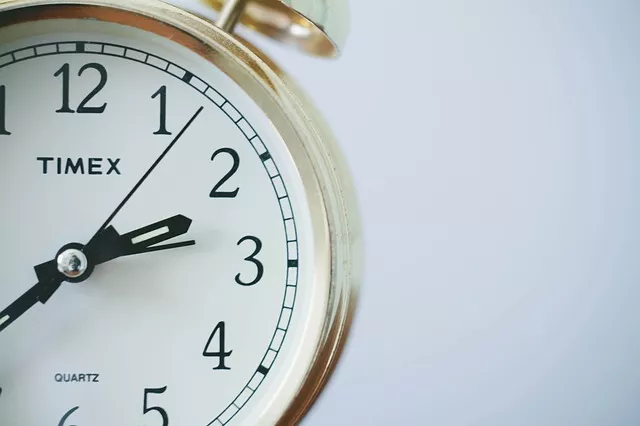The new Medicare payment model for nursing homes provided $200 more per day than the system it replaced in October 2019, according to a new analysis of claims data — setting up a revenue bump at the time the sector needed it most.
During the COVID-19 pandemic, the Patient-Driven Payment Model (PDPM) brought an average Medicare rate of about $620 per day to operators tracked by Zimmet Healthcare Services Group’s CORE Analytics database.
For comparison, the Morganville, N.J.-based consulting firm determined that the rate would have been about $420 per day under the now-defunct Resource Utilization Group (RUG) system, which the federal government phased out at the start of its 2020 fiscal year.
That works out to about $90,000 extra in bottom-line revenue each month for a facility with an average of 15 Medicare residents each day, Zimmet and CORE determined.
“Save a bit of gratitude for PDPM,” the consultancy observed in its analysis. “It arrived just in time.”
The CORE database consists of about 1,800 skilled nursing facilities that provide monthly claims for analysis; Zimmet and CORE acknowledge that the numbers may not necessarily reflect industry-wide performance, but the figures do provide a consistent window into how a diverse group of providers has reacted to the changes.
The Centers for Medicare & Medicaid Services (CMS) trumpeted PDPM as a smarter successor to the RUG system, which positioned therapy minutes at the primary driver of revenue — and, in turn, led to widespread accusations of improper therapy provision based on profit motives and not actual medical necessity.
PDPM sought to fix that dynamic by basing Medicare payments to nursing homes more directly on patient need. In short, the more complex a resident’s medical conditions, the more money the federal government would provide to a nursing home to cover the resident’s care.
With therapy no longer the central payment generator, many operators had also planned on implementing group and concurrent therapy programs designed to reduce expenses. But the COVID-19 pandemic almost immediately scrambled the months of maneuvering and preparation that had preceded the new payment system’s debut.
The resulting lockdowns and isolation protocols, coupled with staffing shortages, quickly eliminated those communal sessions as a safe and viable option during the ongoing coronavirus crisis. But Zimmet noted that during the few pre-pandemic months, therapy charges only declined slightly — thus indicating that a feared overcorrection toward “rationing” therapy did not appear to have occurred.
Instead, the story of COVID-19 has been a sharp drop in post-acute care of all types, as seniors either voluntarily avoid non-emergency surgeries or face outright bans amid spiking coronavirus hospitalizations.
“As elective surgeries were suspended, long-term care residents replaced short term subacute admissions as the driver of Medicare census,” Zimmet observed.
That shift revealed another PDPM benefit: reimbursements related to patients covered under blanket 1135 waivers. In the early days of COVID-19, CMS issued a variety of flexibilities to health care providers, including the emergency extension of residents’ 100 days of post-acute Medicare coverage, and the temporary provision of Medicare-covered nursing home stays without a previous three-day hospitalization.
Those flexibilities did raise significant confusion in the space about who exactly qualified for the bonus Medicare coverage, with Zimmet Healthcare Services Group president Marc Zimmet warning earlier this year that CMS wasn’t necessarily extending a blank check to beneficiaries and providers.
“We’ve had operators calling up and saying: We’re going through our house, we’re putting every patient that’s skilled on program for another 100 days,” he said back in March. “[The waiver] is not a license to skill.”
But because PDPM places a heavier emphasis on meeting residents’ non-therapy needs, the model provided funds to care for residents that received extended Medicare coverage, but who also did not require traditional therapy — including payments for respiratory services and depression treatment.
“Waiver patients often represented more than half of a facility’s Medicare Part A billing, yet few of these residents would have been appropriate for two hours of daily therapy,” Zimmet observed.
This isn’t the first time that Zimmet has praised the fortuitous timing of PDPM.
“RUG-IV would have been a fiscal disaster for SNFs dealing with COVID,” Zimmet Healthcare Services Group and affiliated data firm CORE Analytics concluded in a June report that found a 9% payment increase during the early days of COVID.
And the consultancy isn’t alone. Sabra Health Care REIT (Nasdaq: SBRA) CEO Rick Matros in May observed that PDPM’s new incentives helped to put the landlord’s portfolio on a more stable financial and operational footing even prior to the coronavirus strains.
“RUGs incentivized operators to admit short-term rehab patients only,” Matros said on the real estate investment trust’s (REIT) first-quarter earnings call. “Since we’ve had PDPM in place, we expanded the kinds of patients that have been admitted to the facilities to include a lot of nursing conditions, more complex nursing care, and that has positioned our portfolio to be stronger going into the pandemic.”
Overall, the average PDPM revenue per patient day among CORE facilities has risen from $606 in October 2019 to $629 in October 2020, attributed primarily to improvements in documentation and coding.
As for the future, Zimmet cautioned against panic over the apparent lack of revenue neutrality under the system; CMS did not intend for PDPM to increase overall spending on nursing home care, though the agency has largely remained quiet on claim denials amid the ongoing pandemic.
CMS also made only very minor tweaks to PDPM in its fiscal 2021 payment rule, specifically citing the impact of COVID-19.
“If that differential triggers your cognitive dissonance alarm on PDPM’s budget neutral factor, hit the snooze button for now,” Zimmet wrote of the payment gains. “There are so many mitigating factors to that equation.”



